You may have wondered – what is the secret sauce enabling e.g., Amazon to grow exponentially, yet keep the start-up mentality with strong customer focus and fast-paced innovation?
Some of the important ingredients in the sauce are found in what Amazon has coined the “Day 1 mentality” … put in sharp contrast to the “Day 2 mentality“:
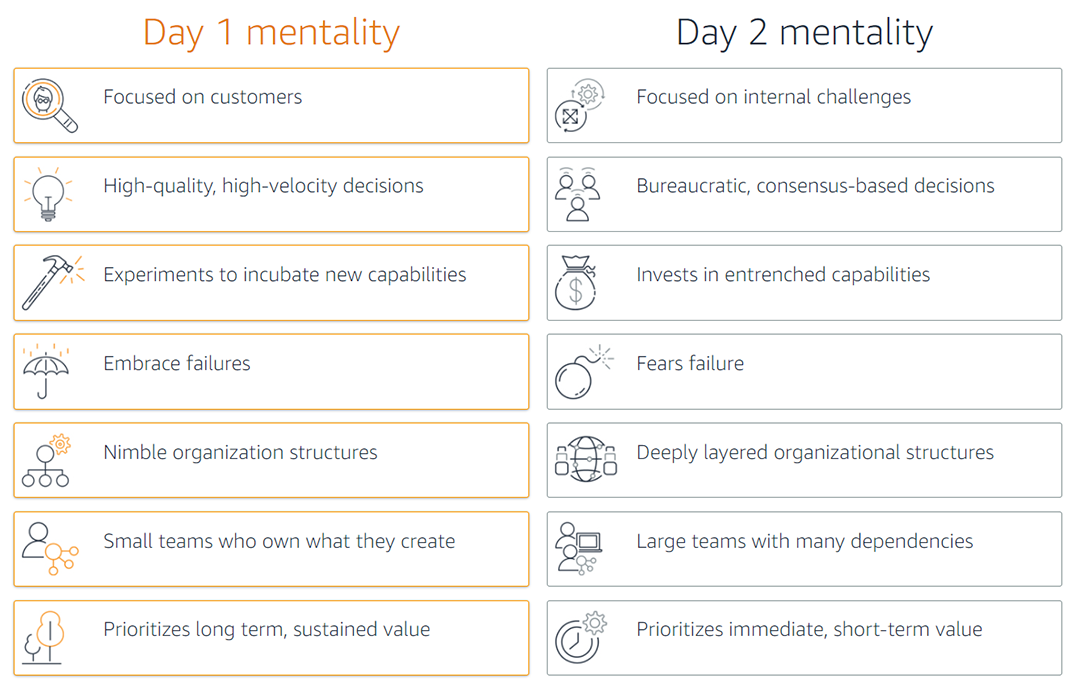
Image source: Daniel Slater Worldwide Lead, Culture of Innovation, AWS
Looking at each of the Day 1 – Day 2 pairs, you’ll probably think “makes perfect sense“. The obvious questions are “then why do we see so many big companies caught with a Day 2 mentality?” and “are they lost, or can they take a detox cure, bringing them towards a Day 1 mentality?“
Another high-tech product-led company also with a strong Day 1 mentality is Elon Musk’s Tesla. He puts innovation in a nutshell:
Why are so many companies caught with a Day 2 mentality, and what can they do?
Let’s in all fairness start with a key background for Amazon and Tesla: they are both digital-natives. This is a huge advantage. Compare this to more traditional companies with e.g., a classic product development and production background now being challenged on the pace of innovation and a digital economy.
 Many of these more traditional companies have their organization and ways of working rooted in the classic thinking. As they grow, their built-in auto pilot will generate more and more bureaucracy and internal friction.
Many of these more traditional companies have their organization and ways of working rooted in the classic thinking. As they grow, their built-in auto pilot will generate more and more bureaucracy and internal friction.
It happens gradually and you’ll not notice it, before it has become a very visible problem impeding your ability to stay competitive – or even relevant. For some its too late to do anything about it. Others take a tough Detox cure.
But – not all companies coming from a traditional background get caught in the classic thinking. Danish LEGO is a perfect example of a company having achieved a strong product culture and fast-paced innovation. If you want to know what a product-led organization looks like – study LEGO (well, some parts of LEGO).
Clear statement on Silver Bullets and religion
Let me be very clear before moving on. I do not subscribe to the idea that some “de-facto framework / model” can or should be seen as magic way to gain success and definitely not being pursued as goals in themselves.
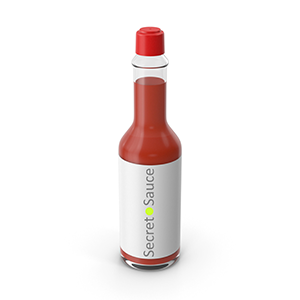 PRINCE2, SAFe, Scrum, Scrum@Scale, HalfDouble, AgilePM, Kanban, Agile Fluency, FAST Agile … are all potential tools in a much larger toolbox. Yes – I’ve used a lot of elements from some of these and read a lot of books. Everything ends-up in my toolbox where they belong.
PRINCE2, SAFe, Scrum, Scrum@Scale, HalfDouble, AgilePM, Kanban, Agile Fluency, FAST Agile … are all potential tools in a much larger toolbox. Yes – I’ve used a lot of elements from some of these and read a lot of books. Everything ends-up in my toolbox where they belong.
None of the elements must become a narrow-sighted religion. Unfortunately I see far too many so called “Agile coaches” (or PRINCE2 high priests for that matter) doing exactly that – taking the toolbox to a level and interpretation where it does not belong. One thing is for sure: the main ingredients in the Secret Sauce are not the frameworks / models. They are more the salt and pepper.
If you are a business owner being met by e.g., a “SAFe xyz certified” person trying to convince you to implement SAFe, be vigilant! He is attempting to sell your elements in a toolbox – do not confuse that person with one being able to help you improve your business (he might, but in that case he’ll not talk SAFe until late in your dialogue).
Innovation Power
Back to the topic …
As Elon Musk says “pace of innovation is all that matters in the long run“. In other words – you need to nurture your Innovation Power:
These Innovation Power characteristics nicely resonates with Amazon’s Day 1 characteristics.
Each area is a big topic in itself – and yes – they are highly related and some even overlap. Below we’ll recap on the essence and shortly discuss the gaps to the traditional company.
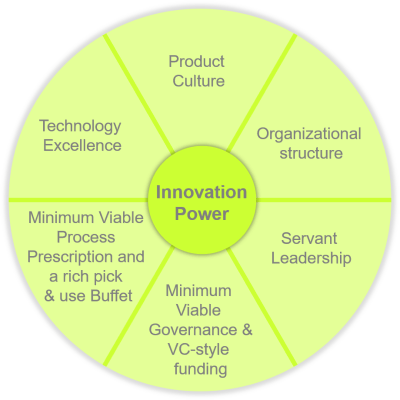
Product Culture
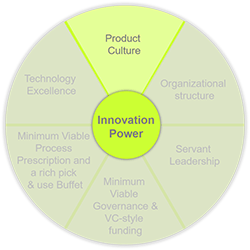
A strong product culture means that the team understands the importance of continuous and rapid testing and learning. They (ed.: the product organization) understand that they need to make mistakes in order to learn, but they need to make them quickly and mitigate the risks. They understand the need for continuous innovation. They know that great products are the resuls of true collaboration. They respect and value their designers and engineers. They understand the power of a motivated product team.
Detox recommendations for the Day 2 organization
-
Clearly communicate that innovation is not something reserved for special selected people in an "innovation lab". In a truly innovative product culture the best ideas often comes from unexpected places. Invite for and encourage to contribute to the innovation process. Crowd-source innovation in your organization.
Organizational structure
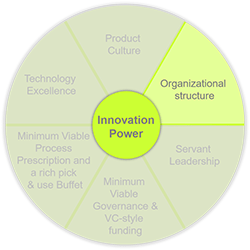
In the high Innovation Power organization you’ll find organizational structures carved-out from a mindset of having highly empowered missionaries serving your real customers with as little as possible distance and friction to these customers.
The organization here is highly aware of the intrinsic auto-pilot when expanding the business: it insists having a nimble structure and keep the team sizes small. The quote Marty Cagan – they scale by leaders/managers:
Fundamentally, as organizations grow, there are two main ways today that organizations attempt to scale.
One is by scaling their leaders (the managers). The other is by scaling their process.
You may have noticed that some “Agile fundamentalists” promote the opinion of needing fewer leaders/managers when becoming “true Agile believers”. Make up your own mind, but also consider this suggestion from Marty Cagan:
Detox recommendations for the Day 2 organization
-
Move your guys closer to the customer ... much closer
This is how the product developers often are distanced from the real customer and impeded by bureaucracy in the Day 2 orhanization:

Aim for giving your product teams a strong strategic context within which they are empowered to discover the best solutions that your customers love, yet work for your business:
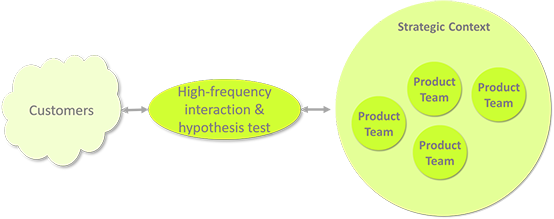
-
Do the above as a limited yet disciplined experiment for at least two reasons: (1) Before making changes at scale, make sure to find a model that works for you. (2) Having a success story will make your scaling much easier - nothing is more convincing that a visible success.
Servant Leadership
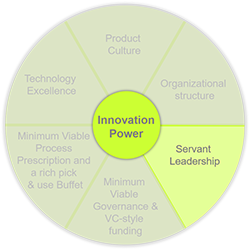
Books have and are being written about Servant Leadership, and its discussion easily becomes academic tending to religious. Yes – it overlaps with Product Culture and Organizational Structure.
My humble understanding, based on practical experience, includes four key areas:
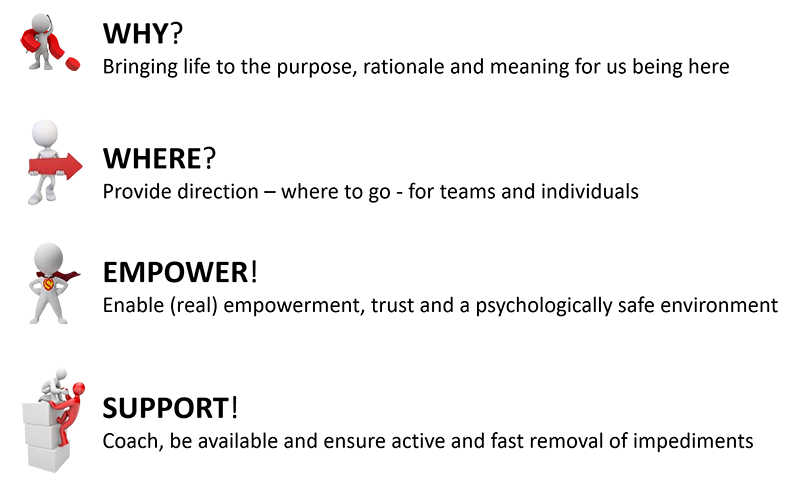
Detox recommendations for the Day 2 organization
-
First and foremost - unlearn the hierarchical "command & control" way of leading, substituting it with "leading by context". Core elements in this context are the Product Vision, Product Strategy and Technology Strategy. It is from this context the product teams are tasked with (hard) customer / business problems for which to discover the best solution.
-
Give room, let the team shine, control your ego, show trust and most important of all - show through you action that you embrace the Product Culture
-
Pave the way for the teams to function at an optimal level. Sometimes a small stone for you is a major blocker for the team
Minimum Viable Governance & VC-style funding
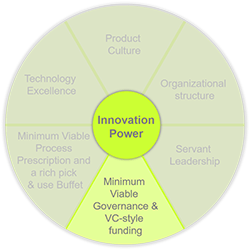
Is your CFO the one calling the shots, and are you having long and painful yearly budget- and prioritization processes? Is it a common belief in your organization that you can plan a project portfolio a year ahead? Are you using big investment programs / Big Bets?
Tendayi Viki, Pirates In The Navy: How Innovators Lead Transformation
If yes, than you’re impeding your own ability to maneuver. It might have been realistic in the past millennium, but no more. Three months is a long time in a digital economy that will definitely need you to adjust your priorities.
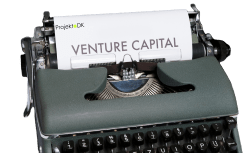 The alternative to this inflexible locking-the-budget approach is what Eric Reis back in the days with Lean Startup coined metered funding. Here we’ll use the analogy of seeking internal Venture Capital.
The alternative to this inflexible locking-the-budget approach is what Eric Reis back in the days with Lean Startup coined metered funding. Here we’ll use the analogy of seeking internal Venture Capital.
Instead of pre-allocating budget to next years project portfolio, only allocate the years total budget. Having your product teams seek internal venture capital will not only sharpen everybody’s awareness of where value is created, it’ll also allow you to fund unforeseen activities in the middle of the budget year.
Detox recommendations for the Day 2 organization
-
Run an experiment. Allocate a chunk of the development budget for later allocation via an internal VC-forum. Start small and learn before you scale-up.
-
Be very critical with large investment programs / Big Bets. Their size in themselves poses a significant risk. Make sure that these monoliths are in fact what serves you best.
-
Tell your CFO in a nice way that his need for control (which in fact is not control, because it is impossible to forecast the correct budget distribution one year ahead) is secondary to our ability to do the right things in our quest to serve our customers.
Minimum Viable Process Prescription and a rich pick & use Buffet
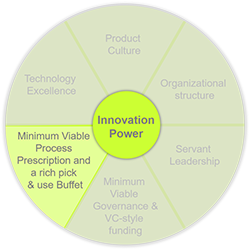
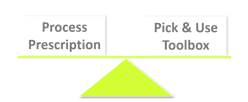
Elon Musk
I’ve experienced radically different approaches to the process prescription balance:
- One driven by CMMI’s obsession of having everything prescribed and statistically optimized in processes (do not dare not to follow the process unless you have a formal waiver, allowing you to do so)
- A trust in people, their professionalism and ability to bring the “Pick & Use Toolbox” into play as needed – not having massively to prescribe mandatory processes.
Both types of organizations can be very successful, but are clearly based on very different values. E.g.., Amazon and Tesla are clearly based on the “Minimum Viable Process” model.
Detox recommendations for the Day 2 organization
-
Start by asking yourself the very basic question: "Do you trust the judgement of your employees and their professionalism enough to let them decide on solutions to problems without you policing them?"
-
If YES - show it!
-
If NO - challenge yourself. Are you hit a the process decease being a way indireectly to control your employees?
-
Finally ask yourself: "Despite Amazon & Tesla being digital natives, what prevents you from turning-down the volume on your process obsession and move in the direction of Amazon and Tesla?"
Technology excellence
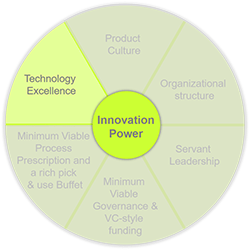
Cut to the bone, technology is the product!
Solid engineering practices and deep technology expertise is of course a must during both Discovery and Development.
One thing that can really kill your business agility is poor engineering practices resulting in e.g., global dependencies. No matter the engineering domain, your engineers must follow the lead from software development ensuring de-coupling via encapsulation behind stable interfaces – not to forget the fundamentally important Configuration Management discipline.
If you do not deliver a Product matching your customers quality expectations, they’ll definitely not fall in love with it. Without technology / engineering excellence, you’ll become irrelevant.
Wrap-up
If you happen to have a Day 2 dominance in your organization, then let’s face it ..
-
.. you will get disrupted! The question is, if you'll do it yourself or have others do it to you?
-
.. your competitors are trying hard aiming for the Day 1 essence .. see bullet one

